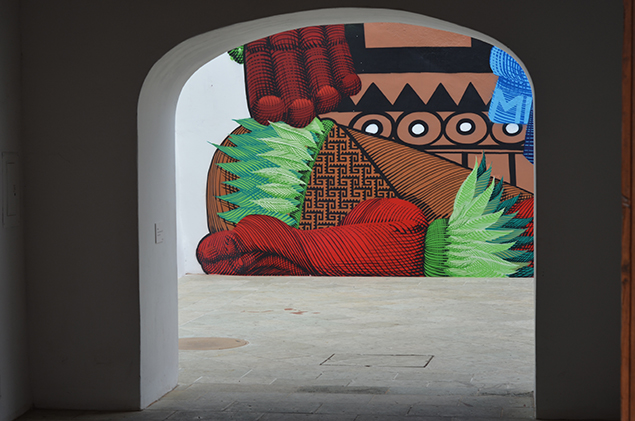
Hecho en Oaxaca, the recent exhibition at the Museo de Arte Contemporaneo de Oaxaca (MACO), displayed the work of twelve artists from around the world whose art practice involves public space, putting their work on museum walls.
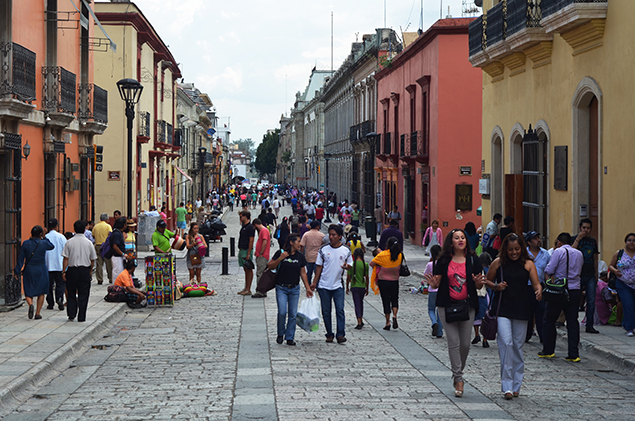
The Museum is located a few blocks up from the Zócalo, on the always-busy, blocked to traffic walking street or andador. Opening on this vibrant urban space, the interior patio by Brazilian artist Nunca offered a mural on the theme of migration, with pre-Columbian themes confronting the grim necktied face of the “Migra.”



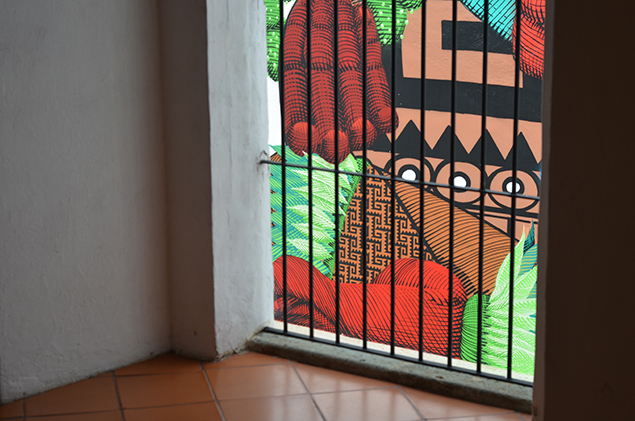
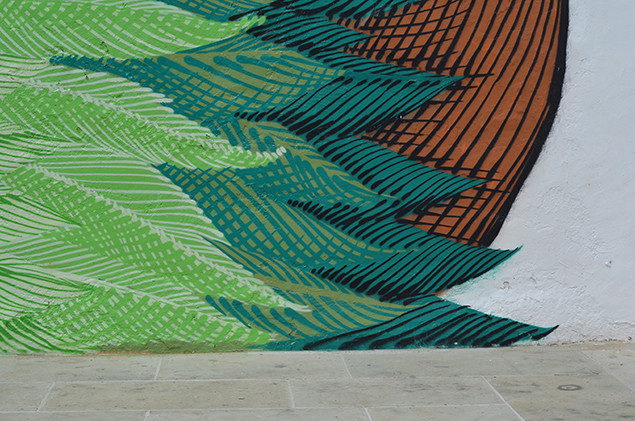
Inside, amazing work was on display starting with Saner‘s “Festín,” an infernal fiesta seeming to invoke the hunger and thirst of corrupt lords from Mexico’s colonial past.
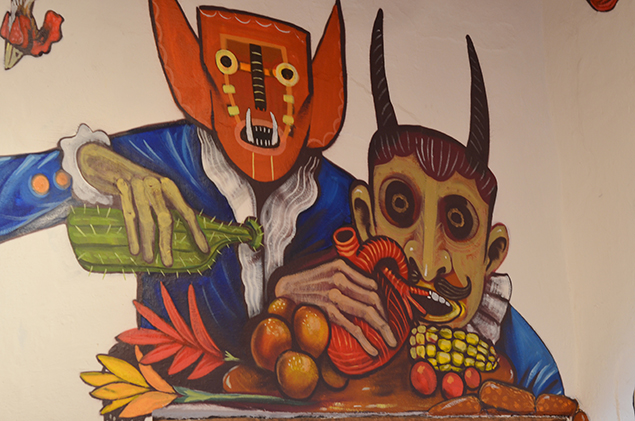

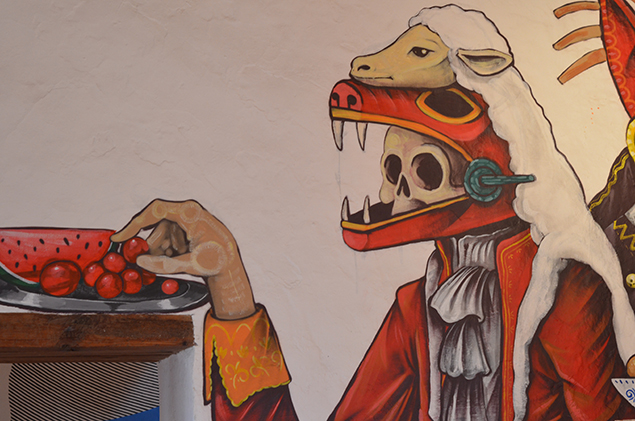
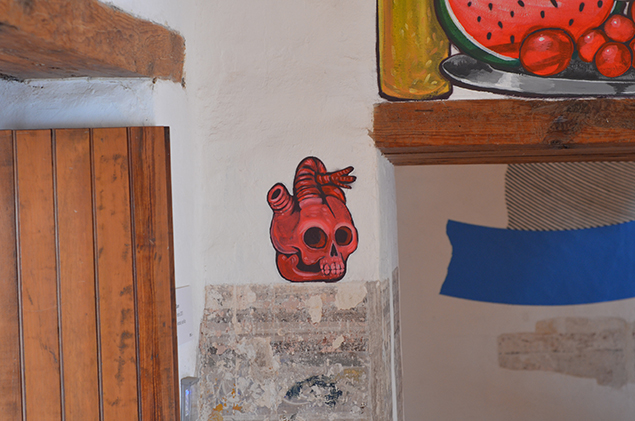
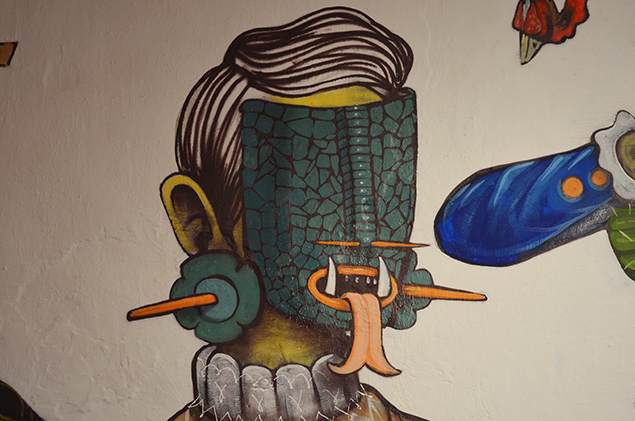
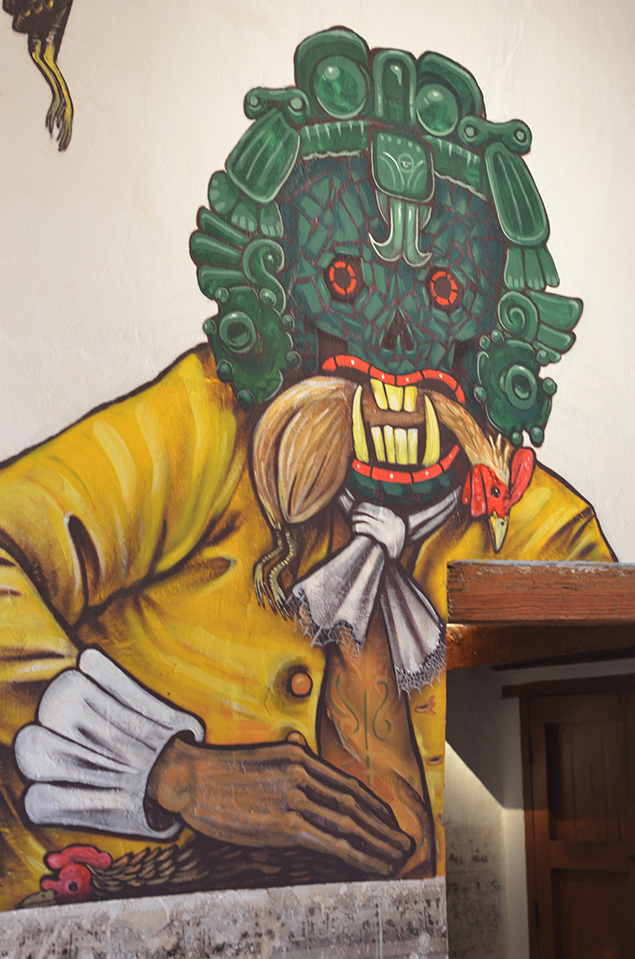

In an adjacent room, San Francisco-born international artist Momo had created sweeping plywood structures painted with patterns that lined up in all sorts of interesting ways depending on your position in the room. The artist’s blog has pics of the outdoor component of his exhibit.
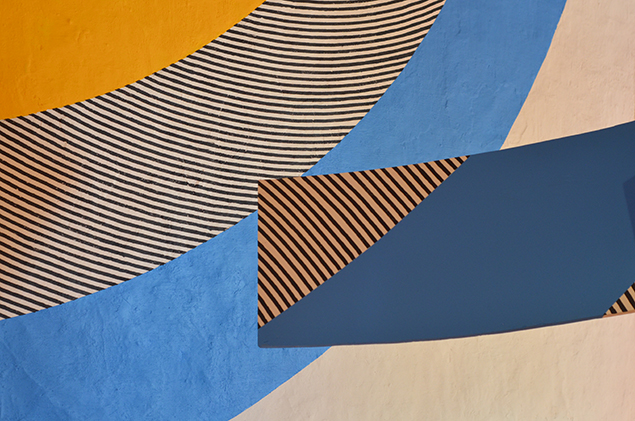
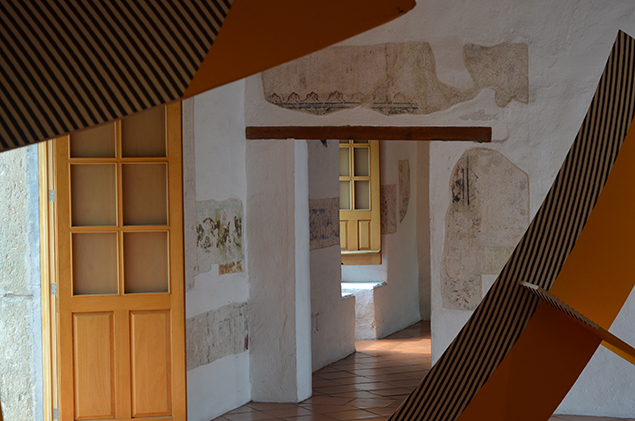
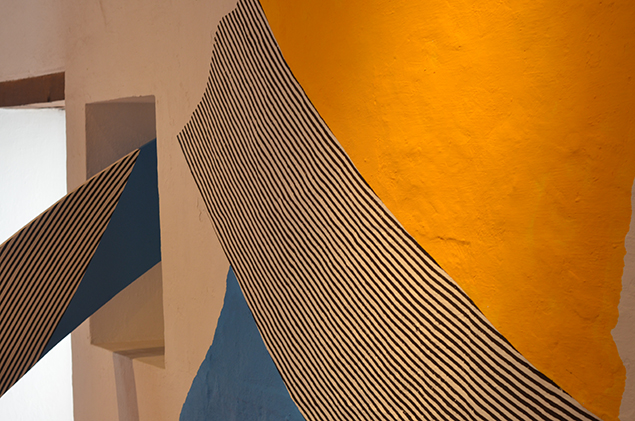
Lapiztola’s work featured the eerie sound of birds emanating from a cage, around which birds filled the room and even clung to the outside window.
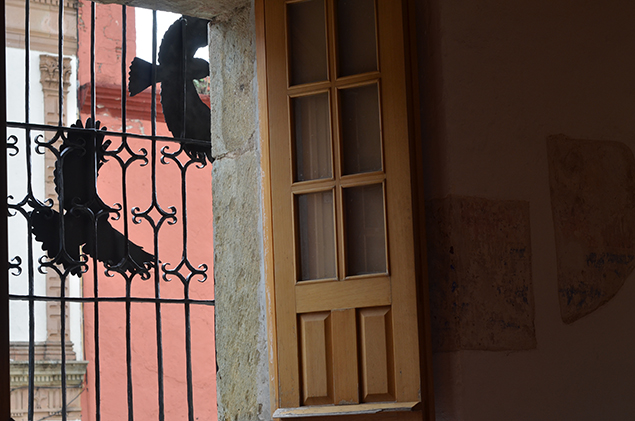
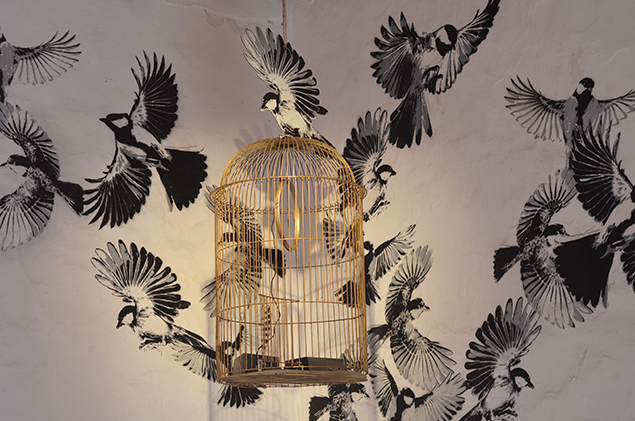

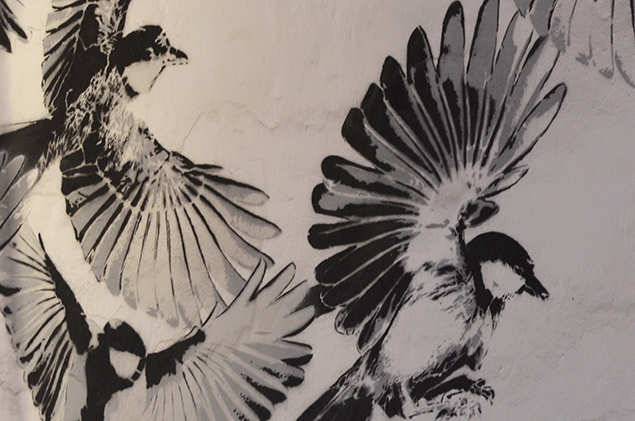
Vhils’ work, “Scratching the Surface” was literally carved into a wall, leaving the dust and rubble behind at the bottom of the piece.
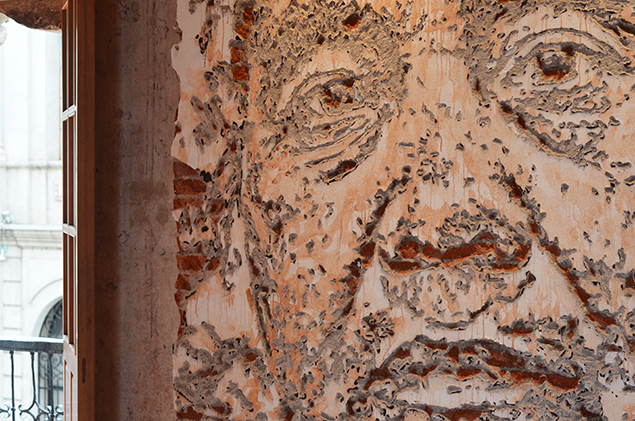
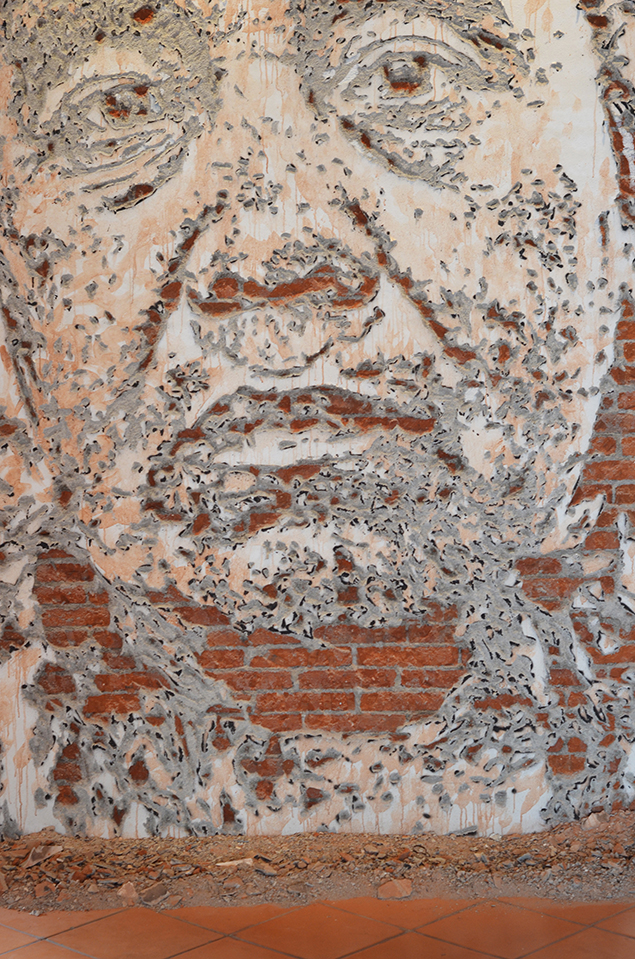
New York-based artist Swoon’s intricate wheatpaste assemblages covered another large room. Her cosmic, chaotic collages aren’t just found on walls – as a side note, Swoon pulled off a pretty cool stunt a few years at the Venice Biennale, when she crashed the event on boats built from garbage.




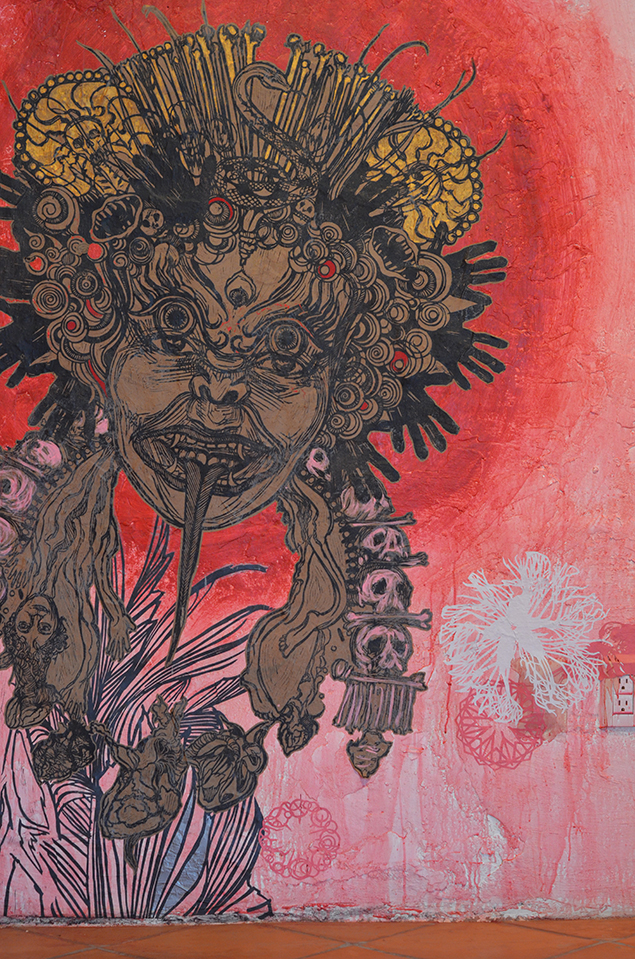
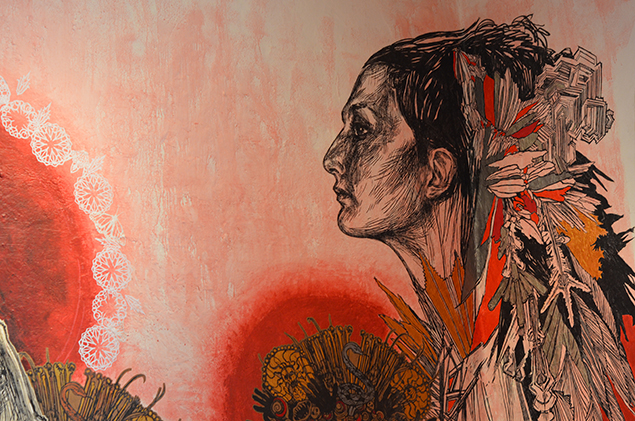
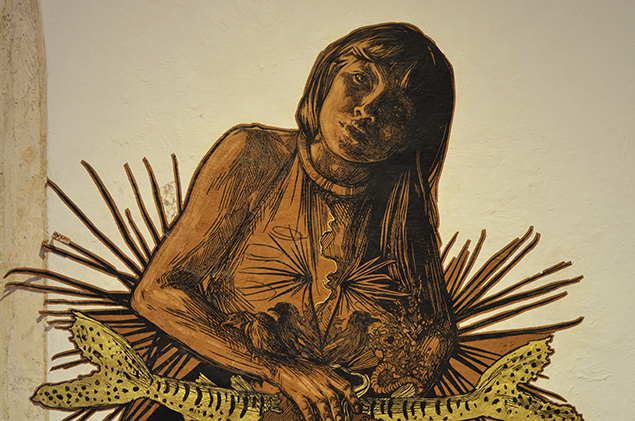
The show wouldn’t be complete without a contribution from Dr. Lakra, probably the best known Oaxacan street artist, and the son of the godfather of contemporary Oaxacan art, Francisco Toledo. Inspired by classic Mexican movie posters, the mural celebrated a visceral, colorful, lurid aesthetic.
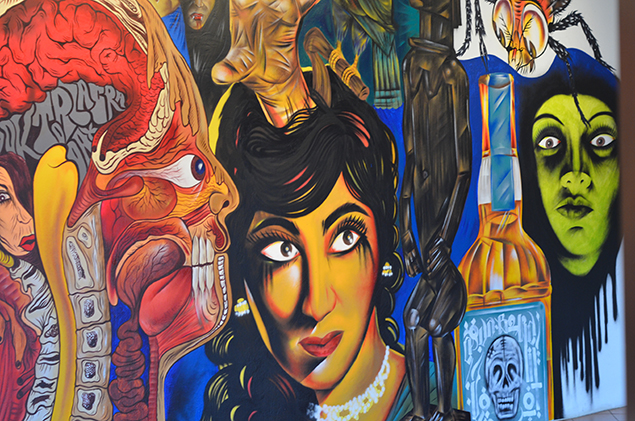
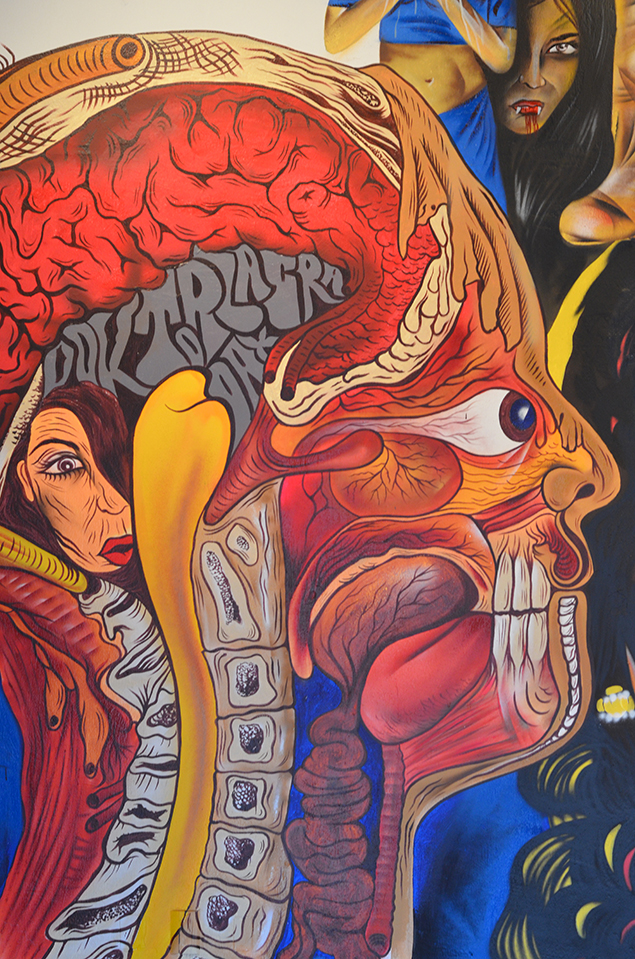

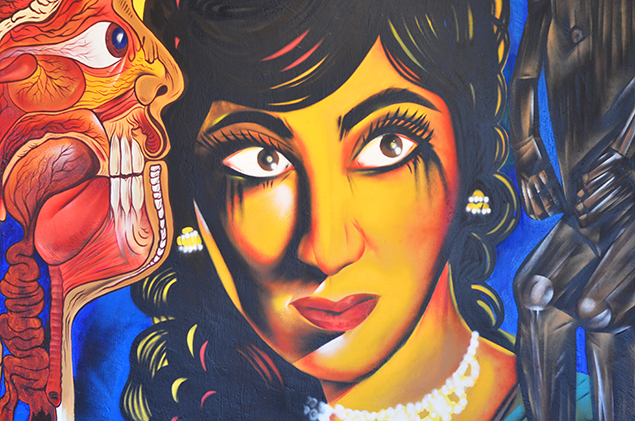
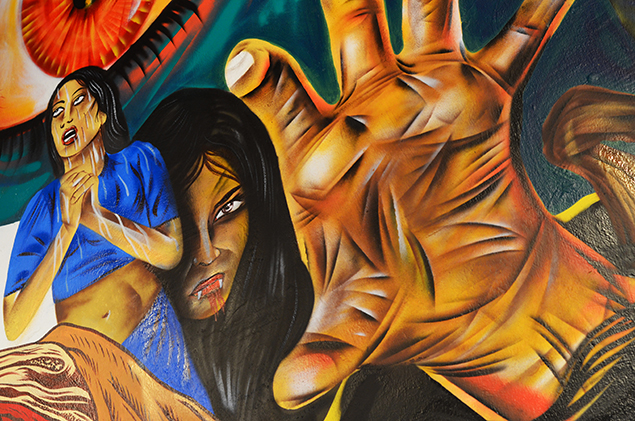
Dr. Lakra showed a subtler mood with the abstract calligraphy lettering the walls of the next room.
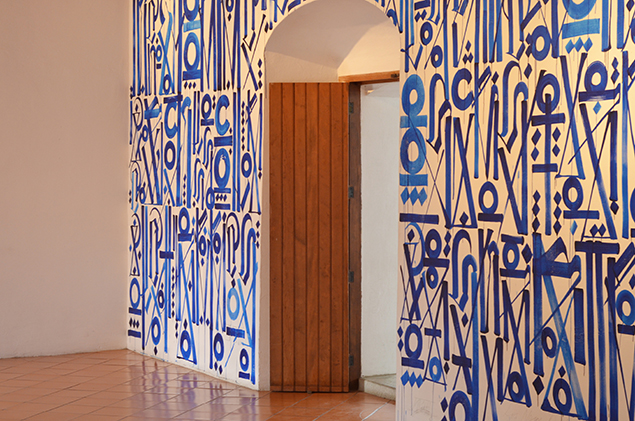

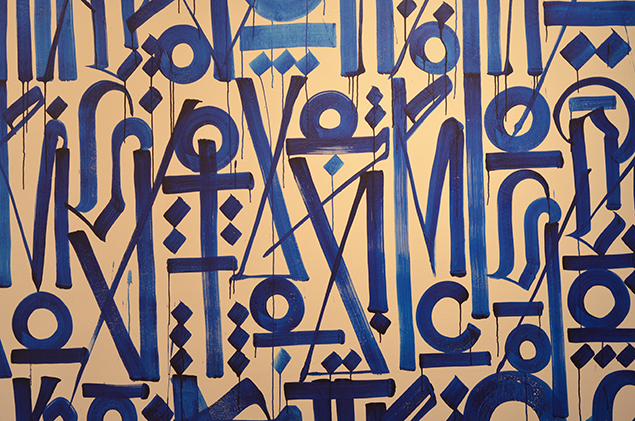
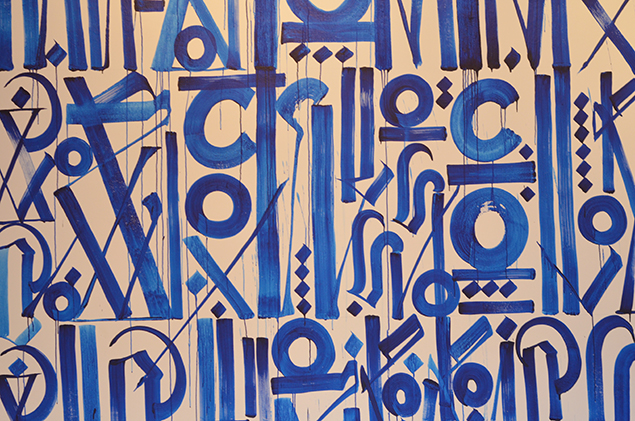
Date Farmers’ “Animal Kingdom” invoked ritual and magic.

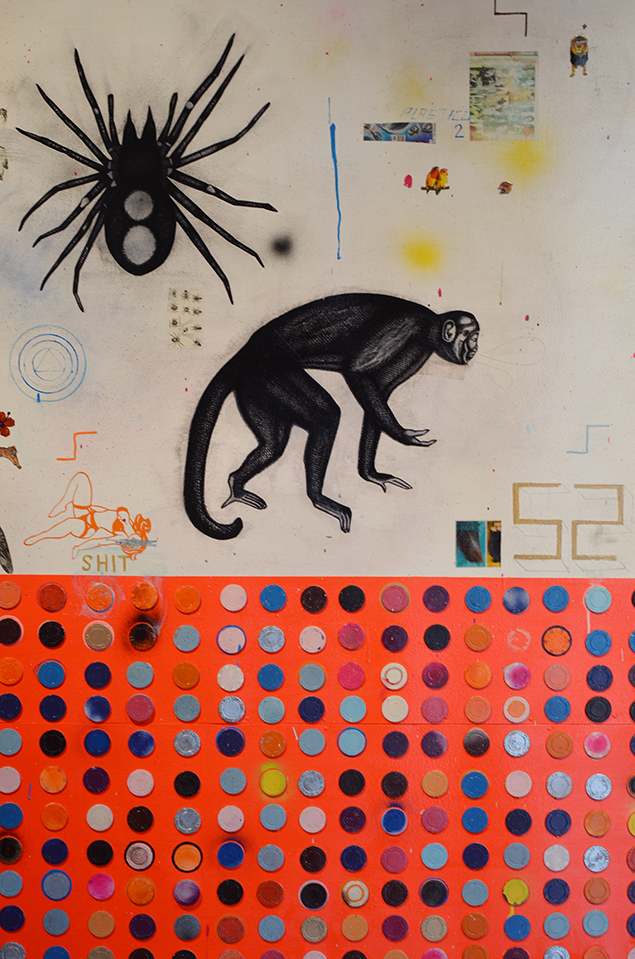

Benito Juarez’s head on a plate is at the center of a dark “Last Supper a la Mexicana” by Yescka.
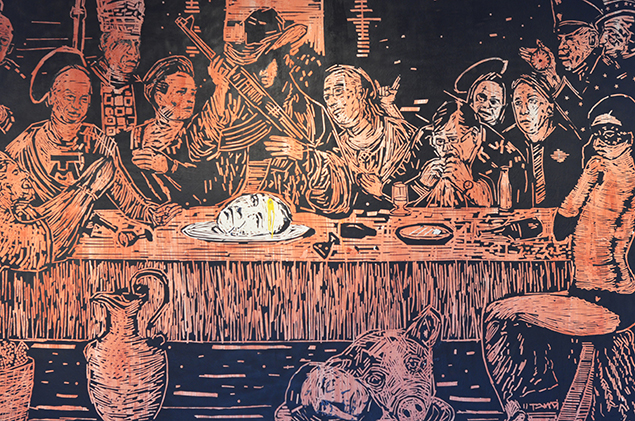
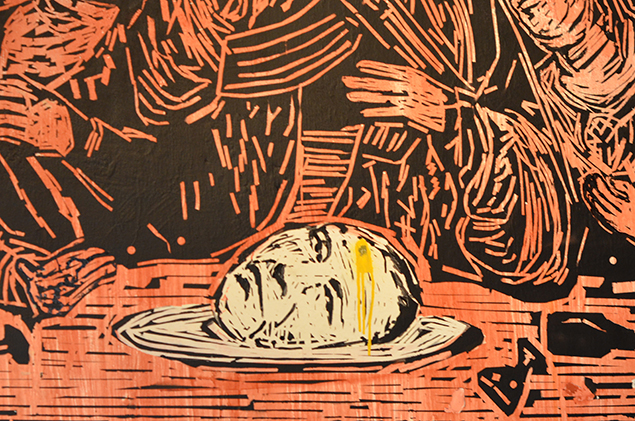
German-Spanish twin brothers How and Nosm filled out their installation with a jumble of landscapes and figures in “Cursed.”
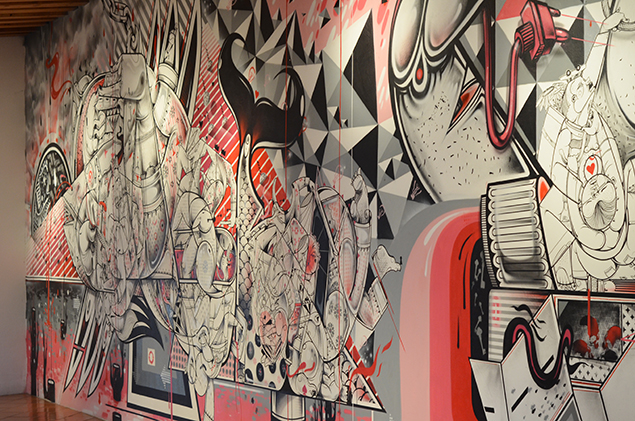
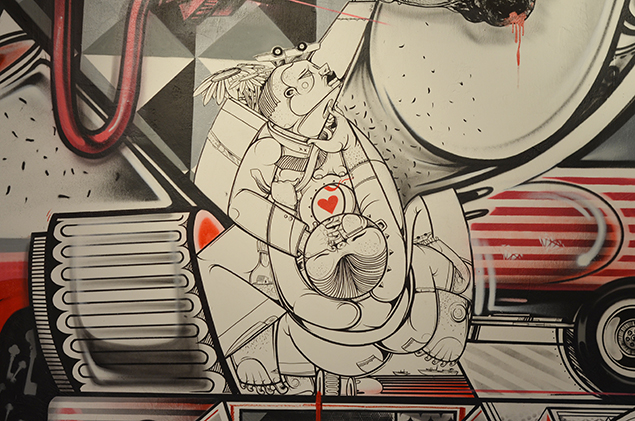


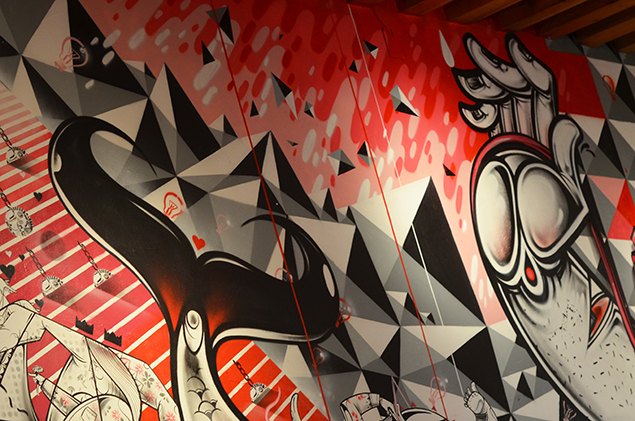
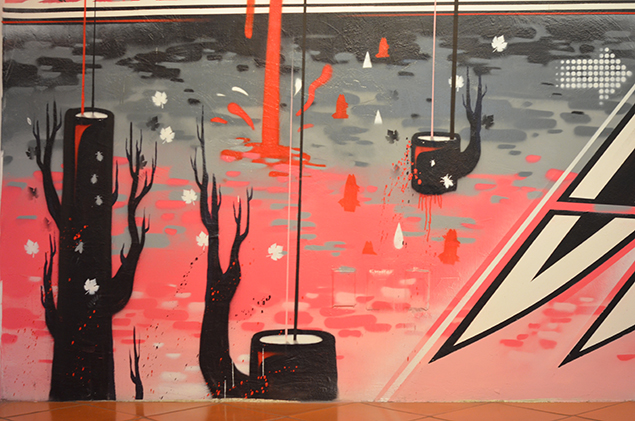
Lastly, outside the Hecho en Oaxaca exhibit I found a cool, uncredited mural, along with a tin coffin containing a video of the artist struggling through the streets of Oaxaca carrying a load of wood on a handcart (if anyone reads this and knows who did this, please leave in the comments).
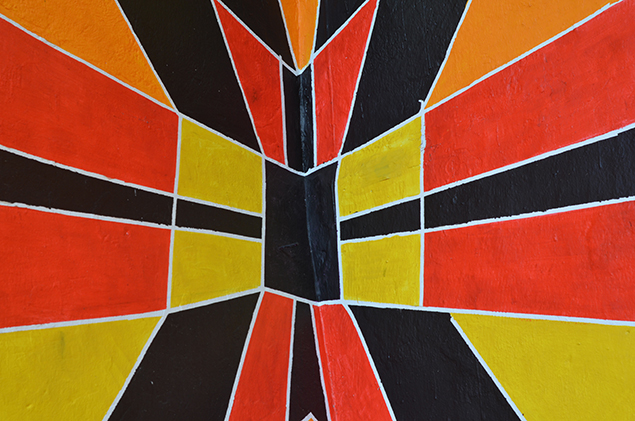
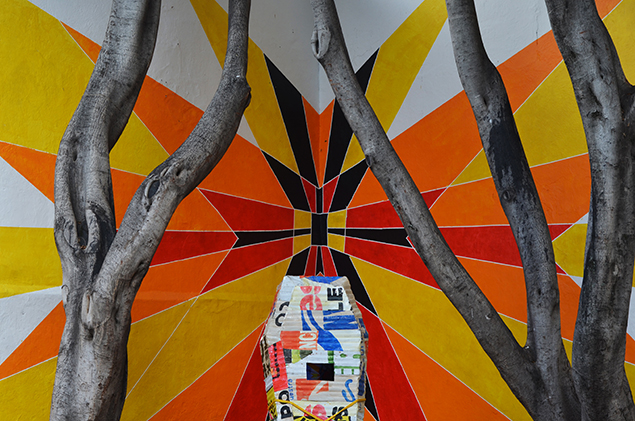
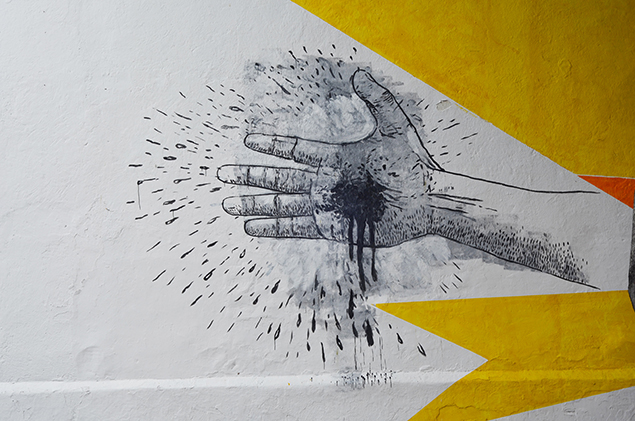
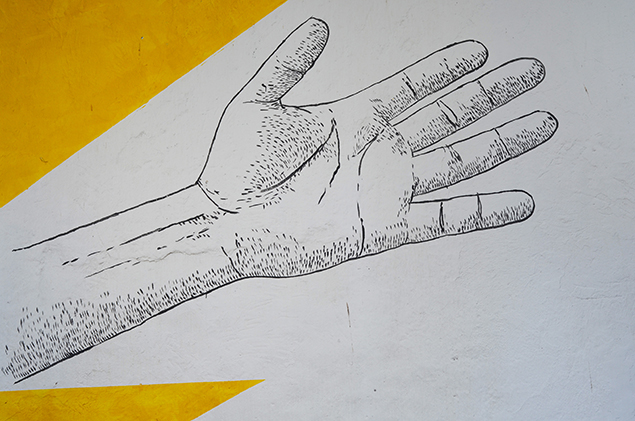





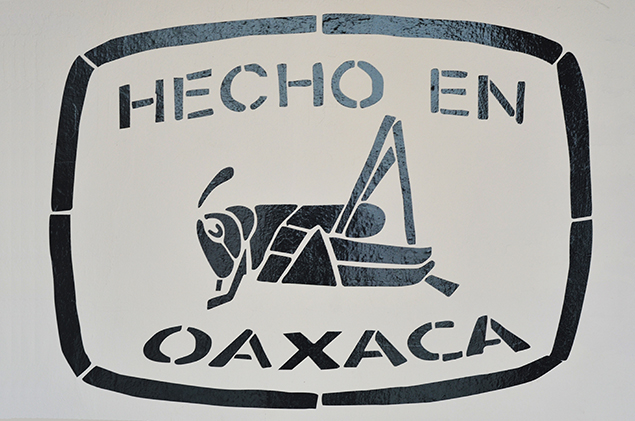



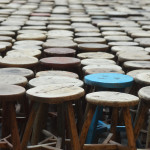
Lords of the past AND PRESENT that is.
@A – True enough, though they don’t wear ruffled collars anymore.